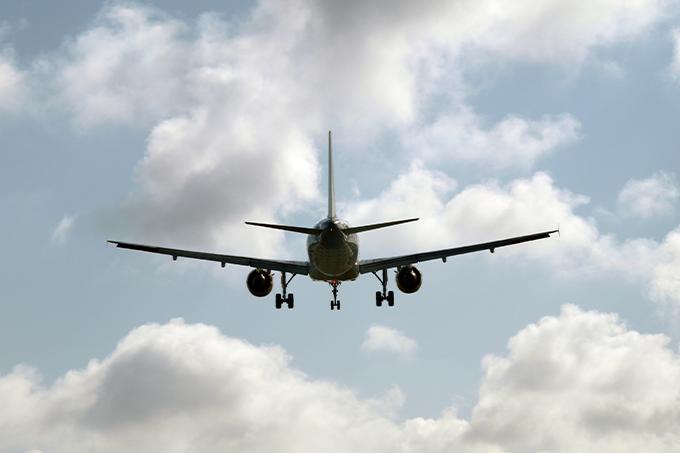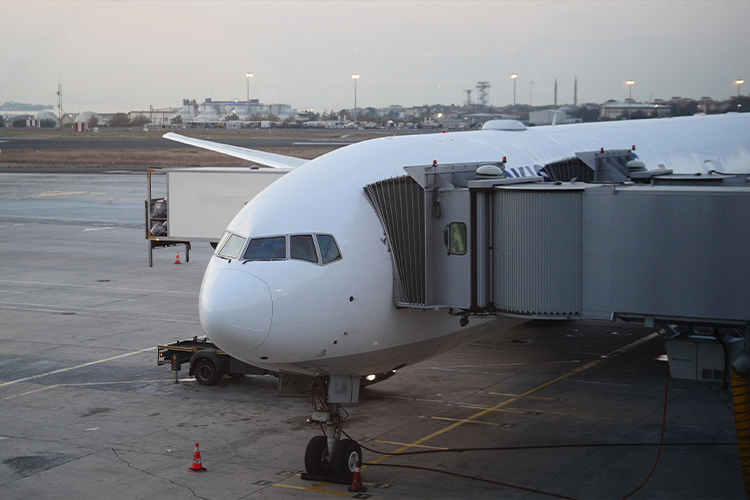
Holding patterns have become a crucial part of aviation in terms of safety. However, what is a holding pattern and why do we have holding patterns? A holding pattern is the pattern, or ma-noeuvres, that an aircraft takes before landing. Often times, you can see aircrafts circling radio beacons, this is because they are not able to land yet and are currently in holding, usually in an oval pattern.
Holding patterns are used to prevent accidents from occurring. In some cases, incoming aircraft may be stacked due to ground (on the runway or the taxi way) or air traffic, poor weather, or run-way unavailability. Another reason to enter a holding pattern may be due to a request from the pilot to allow time to handle any emergencies on board or for any other reasons that requires a flight de-lay as holding patterns serves as a delaying tactic.
Now that we have covered the basics, let’s jump into the point of this article. Entry procedures gives directions to pilots on how to enter holding when required. There are around 3 entry sectors to watch out for: the parallel entry, the offset entry, and the direct entry.

Source Picture : Freepik/fromkazanwithlove
The parallel entry requires the pilot to turn towards the outbound leg of the holding pattern and con-tinue on left in order to reach the inbound leg and fly above the fix. Once reaching the fix, turn to-wards the right and continue on. The offset entry exists once the fix has been reached and is done to make a 30 degree turn in the air. The direct entry procedure follows the pattern accordingly as the charts given say. When an aircraft’s entry procedure turns to the left, it is considered to be a non-standard holding pattern, as opposed to standard holding patterns that turns to the right. Non-standard holding patterns only exists when the pilot is told to do so by the Air Traffic Controller (ATC). Otherwise, pilots must follow the standard holding pattern that would have the plane turning to the right after initial entry into the holding pattern.
DME holding patterns are similar to the standard holding pattern. The only differences can be found in the units used. In DME holding patterns, distances are used instead of time in order to create the boundaries of the holding pattern. The pilot, when entering DME holding pattern, will be aided by the ATC and will be given a specific distance to travel in order to continue on with the holding pattern.
Finally, let’s discuss speed limitations. Speed limitations are, most of the time, specified in the charts or given by the ATC. The speed limitations vary according to the airspace that the aircraft is in so pilots mustn’t assume that one fits all. The International Civil Aviation Organisation (ICAO) has specified certain speed limitations for certain altitudes and pilots must report back to the ATC if the speed limit has been exceeded to prevent any incidents from occurring. If the pilot does not report back to the ATC and continues on at the current excessive speed, the aircraft may experience tur-bulence, controllable and/or uncontrollable turbulence. Exceeding speed limits when in holding pat-tern may be extremely dangerous during landing which could result in the aircraft skidding off the tracks and crashing. With all this in mind, holding patterns may look dangerous, but if pilots follow the rules and regulations, all will be well.

Holding patterns have become a crucial part of aviation in terms of safety. However, what is a holding pattern and why do we have holding patterns? A holding pattern is the pattern, or ma-noeuvres, that an aircraft takes before landing. Often times, you can see aircrafts circling radio beacons, this is because they are not able to land yet and are currently in holding, usually in an oval pattern.
Holding patterns have become a crucial part of aviation in terms of safety. However, what is a holding pattern and why do we have holding patterns? A holding pattern is the pattern, or ma-noeuvres, that an aircraft takes before landing. Often times, you can see aircrafts circling radio beacons, this is because they are not able to land yet and are currently in holding, usually in an oval pattern.
Holding patterns are used to prevent accidents from occurring. In some cases, incoming aircraft may be stacked due to ground (on the runway or the taxi way) or air traffic, poor weather, or run-way unavailability. Another reason to enter a holding pattern may be due to a request from the pilot to allow time to handle any emergencies on board or for any other reasons that requires a flight de-lay as holding patterns serves as a delaying tactic.
Now that we have covered the basics, let’s jump into the point of this article. Entry procedures gives directions to pilots on how to enter holding when required. There are around 3 entry sectors to watch out for: the parallel entry, the offset entry, and the direct entry.

Source Picture : Freepik/fromkazanwithlove
The parallel entry requires the pilot to turn towards the outbound leg of the holding pattern and con-tinue on left in order to reach the inbound leg and fly above the fix. Once reaching the fix, turn to-wards the right and continue on. The offset entry exists once the fix has been reached and is done to make a 30 degree turn in the air. The direct entry procedure follows the pattern accordingly as the charts given say. When an aircraft’s entry procedure turns to the left, it is considered to be a non-standard holding pattern, as opposed to standard holding patterns that turns to the right. Non-standard holding patterns only exists when the pilot is told to do so by the Air Traffic Controller (ATC). Otherwise, pilots must follow the standard holding pattern that would have the plane turning to the right after initial entry into the holding pattern.
DME holding patterns are similar to the standard holding pattern. The only differences can be found in the units used. In DME holding patterns, distances are used instead of time in order to create the boundaries of the holding pattern. The pilot, when entering DME holding pattern, will be aided by the ATC and will be given a specific distance to travel in order to continue on with the holding pattern.
Finally, let’s discuss speed limitations. Speed limitations are, most of the time, specified in the charts or given by the ATC. The speed limitations vary according to the airspace that the aircraft is in so pilots mustn’t assume that one fits all. The International Civil Aviation Organisation (ICAO) has specified certain speed limitations for certain altitudes and pilots must report back to the ATC if the speed limit has been exceeded to prevent any incidents from occurring. If the pilot does not report back to the ATC and continues on at the current excessive speed, the aircraft may experience tur-bulence, controllable and/or uncontrollable turbulence. Exceeding speed limits when in holding pat-tern may be extremely dangerous during landing which could result in the aircraft skidding off the tracks and crashing. With all this in mind, holding patterns may look dangerous, but if pilots follow the rules and regulations, all will be well.
Dr.Gema Goeyardi as a Gold Seal flight instructor will help you to achieve your dream as a pilot in a fast track accelerated program. His secret recipe of accelerated flight training syllabus has proven to graduate pilots from Private Pilot to ATP world wide in just very short days. As an ATP and Boeing 737 captain he always set a high standard of training and encouraged all students to have a professional pilot qualification standard. Lets talk with Dr.Gema for your training program plan, schedule your check ride, and customize your flexible training journey.
Dr.Gema Goeyardi as a Gold Seal flight instructor will help you to achieve your dream as a pilot in a fast track accelerated program. His secret recipe of accelerated flight training syllabus has proven to graduate pilots from Private Pilot to ATP world wide in just very short days. As an ATP and Boeing 737 captain he always set a high standard of training and encouraged all students to have a professional pilot qualification standard. Lets talk with Dr.Gema for your training program plan, schedule your check ride, and customize your flexible training journey.